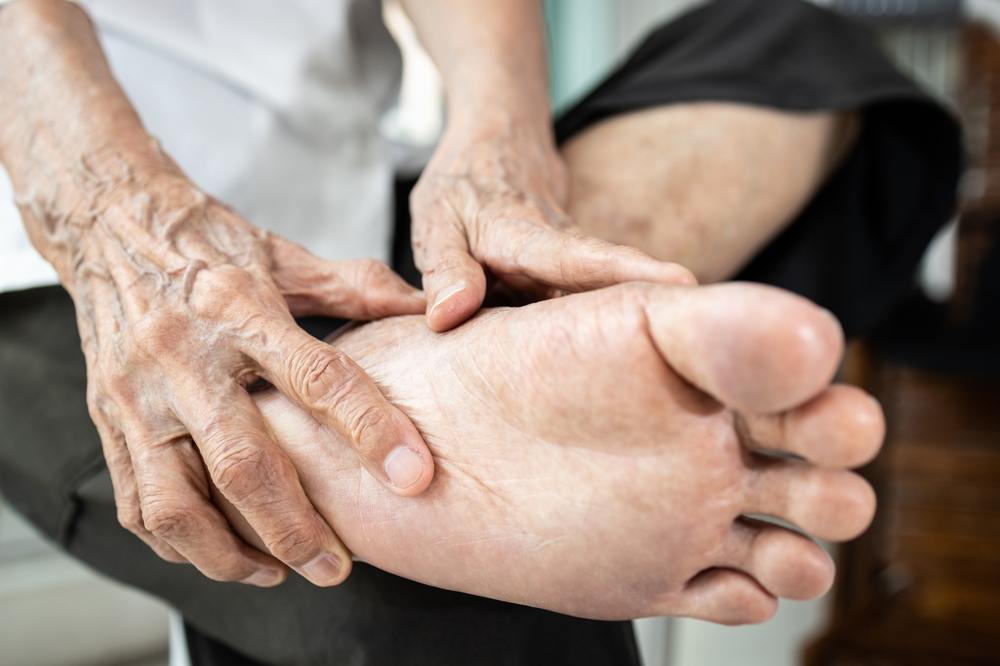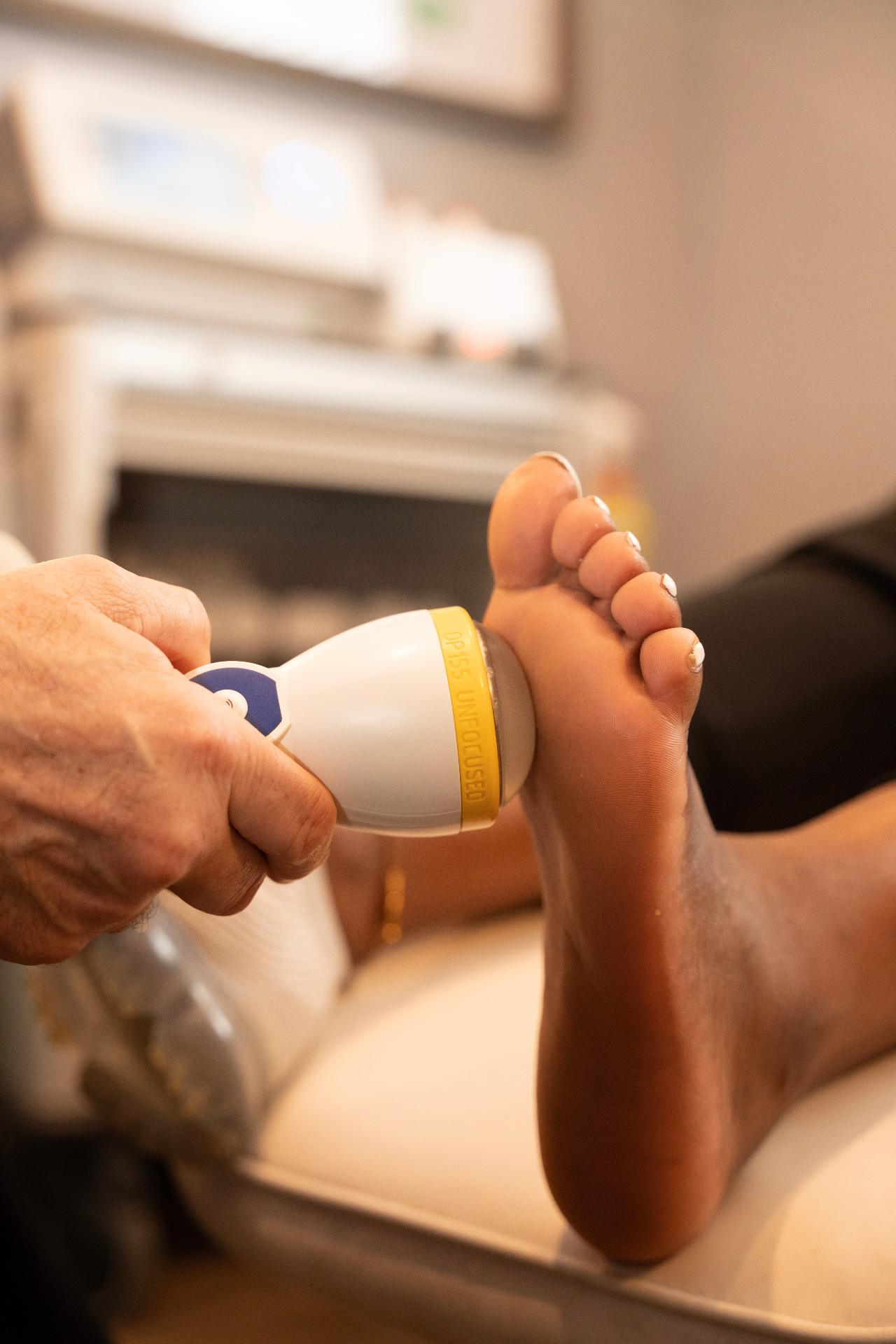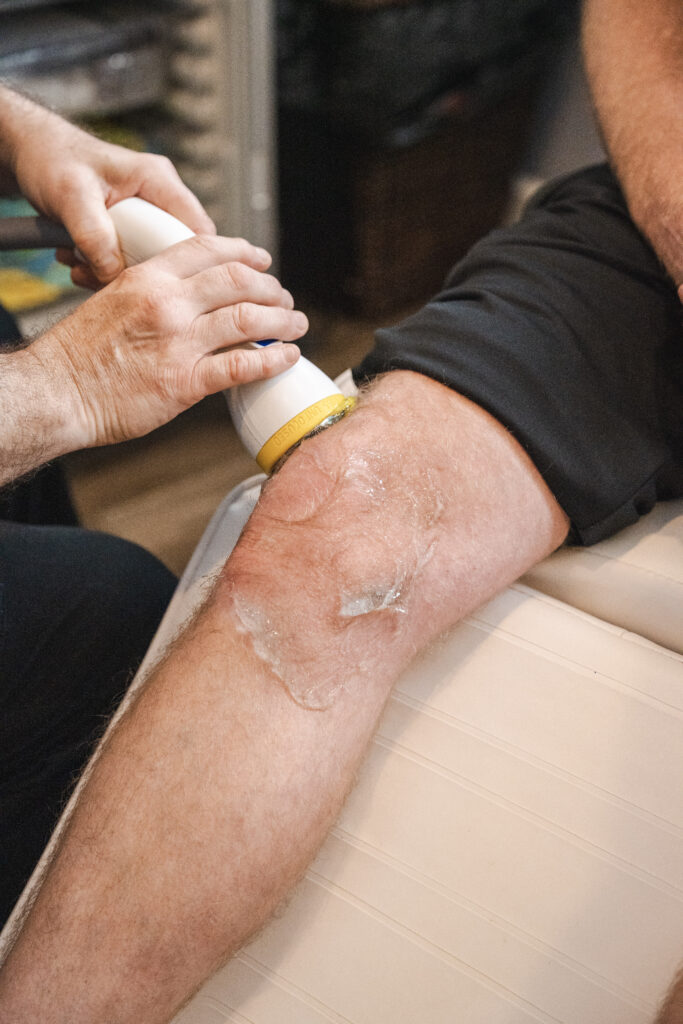Patellar tendonitis is a subset of a larger family of conditions known as patellar tendinopathy. It’s characterized by the inflammation of the patellar tendon, which can be caused by excessive jumping, landing, or changing direction—activities that put repeated stress on the patellar tendon. Symptoms often include:
- pain and tenderness at the base of the kneecap
- difficulty in performing activities that require knee bending, and
- sometimes swelling.
A typical case of patellar tendonitis could be an athlete who intensifies their training regimen without giving the body adequate time to adjust, thereby causing the patellar tendon to become inflamed. If this tendonitis is left untreated, it can progress into a more serious condition called tendinosis, characterized by tears in the tendon and requiring a longer recovery time.
Despite various treatment methods available for patellar tendonitis, including rest, physical therapy, and medications, some cases may not respond well to these conventional approaches, making it necessary to explore alternative treatments like shockwave therapy.
It’s important to note that these are just some of the most common causes of patellar tendonitis. If you are experiencing patellar tendonitis, you can learn if your condition is suitable for treatment and try shockwave therapy with our New Patient Special.
Understanding Shockwave Therapy as a Treatment for Patellar Tendonitis
Shockwave therapy, a non-invasive treatment used in physiotherapy, orthopedics, and urology, has gained increasing recognition as a potential treatment option for patellar tendonitis
At its core, Shockwave therapy is a method that uses acoustic shockwaves to stimulate healing in painful body regions. These shockwaves are short, intense energy waves traveling faster than the speed of sound. They may either be high-energy or low-energy waves, and their application depends on the patient’s condition and the treatment phase.
Its wide-ranging therapeutic uses span across various medical disciplines. For example:
Orthopedics: It can treat conditions like patellar tendonitis, plantar fasciitis, tennis elbow, and calcific tendinitis of the shoulder.
Urology: it’s frequently used to break down kidney stones—a process known as lithotripsy.
Dermatology: It is used to treat certain conditions such as cellulite and skin elasticity issues.
An important progression in the field of shockwave therapy is the development of SoftWave therapy. SoftWave therapy uses unfocused low-intensity shockwaves that interact with tissue at a cellular level. The resulting biological responses include increased local blood flow, tissue regeneration, and reduced inflammation. Notably, SoftWave therapy doesn’t cause microtrauma, unlike other types of shockwaves, making it a safe and highly efficient treatment, especially for patellar tendonitis and other chronic conditions.
Does Shockwave Help Patellar Tendonitis?
Shockwave therapy is an effective treatment for patellar tendonitis, as evidenced by numerous studies. This non-invasive therapy uses acoustic waves to stimulate the body’s healing process, encouraging tissue regeneration and reducing chronic inflammation, a principal concern with patellar tendonitis.
Several studies support its efficacy. A cross-sectional study published in the Clinical Journal of Sports Medicine reported significant symptom improvement in athletes with chronic patellar tendinopathy after shockwave therapy. Similarly, an International Journal of Surgery review confirmed the positive impact of shockwave therapy, particularly with high-energy flux density.
Another review in the British Columbia Medical Journal suggested Extracorporeal Shock Wave Therapy (ESWT) as an alternative for patients who didn’t respond to other non-surgical treatments.
However, it’s important to note that not all shockwave therapies are created equal. Some, like SoftWave therapy, take a different approach. SoftWave uses unfocused low-intensity shockwaves to stimulate a healing response in body tissues. It covers a wider and deeper area (7cm x 12cm) compared to traditional focused shockwaves or radial waves. This makes it especially beneficial for treating large joint and muscle issues. Additionally, SoftWave therapy typically necessitates fewer sessions than other shockwave treatments.
Benefits of Shockwave Therapy for Patellar Tendonitis
Shockwave therapy, particularly SoftWave therapy, can offer a new ray of hope for patients struggling with patellar tendonitis. It’s especially beneficial for those who have tried traditional treatment methods without much success, or those who wish for a non-invasive treatment option with quicker recovery times. Here are some significant benefits of Shockwave therapy for patellar tendonitis:
- Pain & Inflammation Reduction: Shockwave therapy works by stimulating the body’s natural healing process, leading to a reduction in pain and inflammation over time.
- Non-Invasive Treatment: Unlike surgery, shockwave therapy is non-invasive, meaning it doesn’t require incisions or anesthesia, reducing the risk of complications.
- Quick Sessions: Each session of shockwave therapy is relatively quick, typically lasting around 15-20 minutes, making it a convenient treatment option.
- Promotes Healing: Shockwave therapy can stimulate blood flow, encourage cellular regeneration, and promote the healing of the tendon.
Improved Mobility: As pain decreases and the tendon heals, patients often find that their mobility improves, enabling them to return to their daily activities and sports faster.






